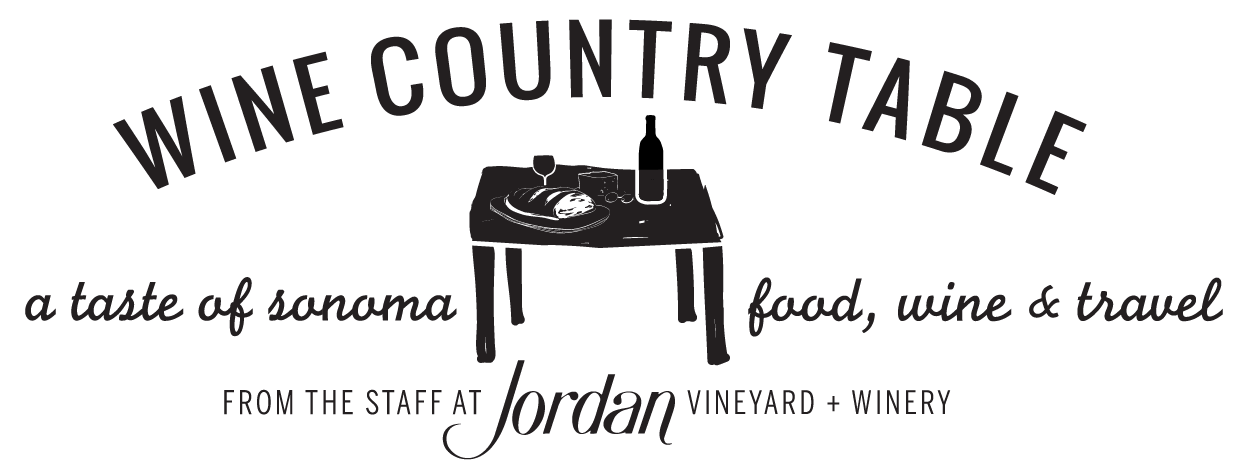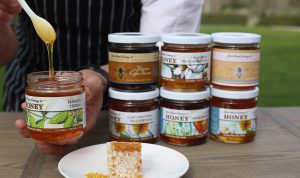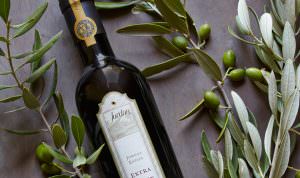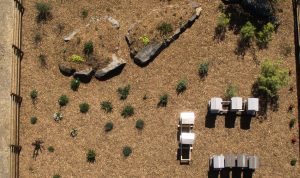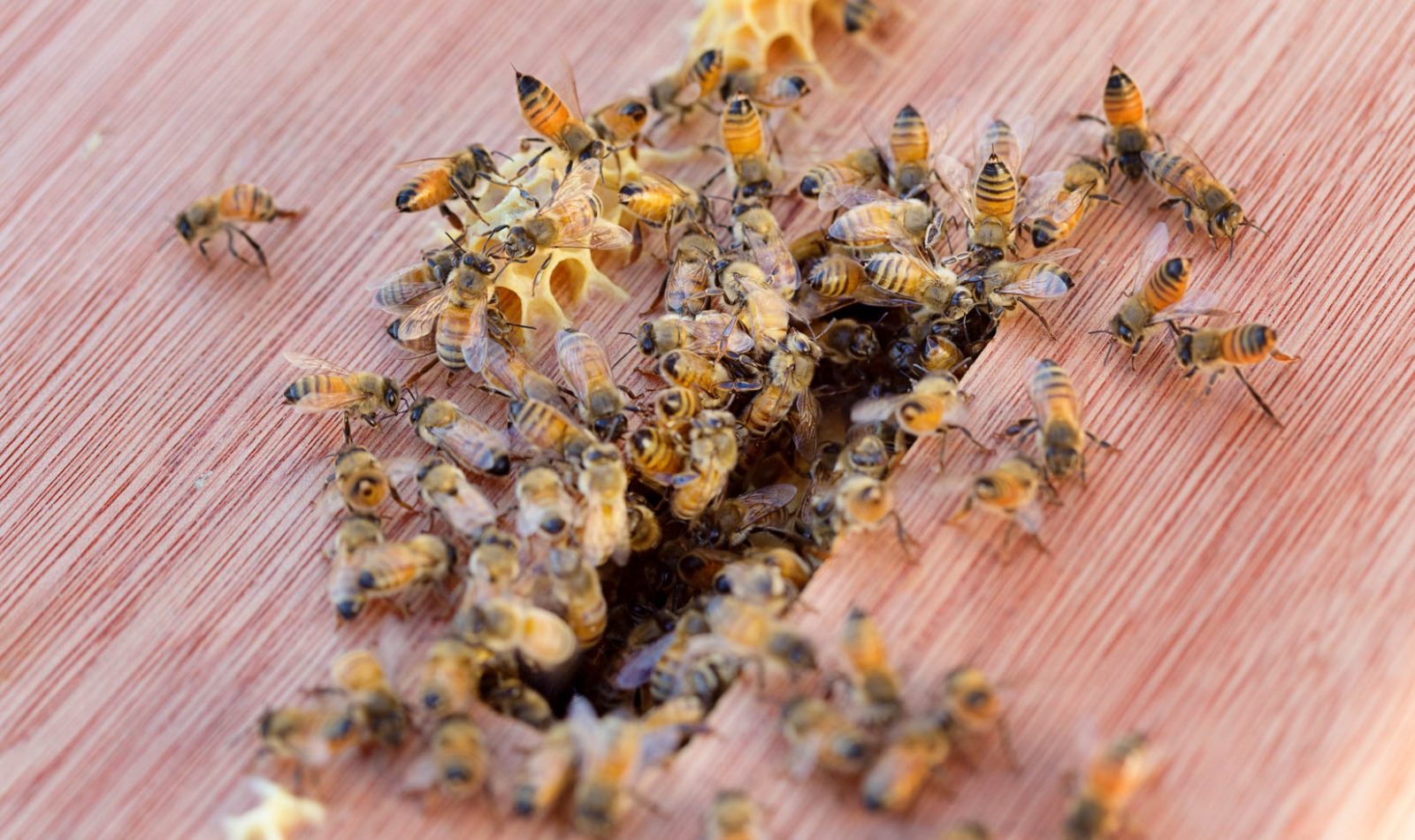
25 Fascinating Honey Bee Facts to Sweeten the Mind
As chefs, we couldn’t do our jobs without the help of honey bees. These tiny, fascinating creatures pollinate more than 130 types of fruits and vegetables, which means about 35 percent of the food humans eat worldwide relies on pollinators. The role bees play in a biodiverse ecosystem is one of the many reasons why Jordan has invested in planting large pollinator gardens across the estate and building awareness through collaborations with The Good of Hive . Even though wine grapes are cultivated (meaning they don’t rely on bees for pollination), bees are crucial to a healthy and thriving vineyard. They pollinate cover crops, which in turn replenish nutrients in the soil and draw beneficial predators who deter vineyard pests. And, we love the flavors these foragers bring to our estate honey too.
After receiving Pollinator Partnership’s 2022 Monarch Sustainer of the Year Award recently, we decided it was the perfect time to expand upon our list of fascinating honey bee facts to keep the buzz going about pollinator awareness.
25 Honey Bee Facts to Make Your Knowledge Swarm
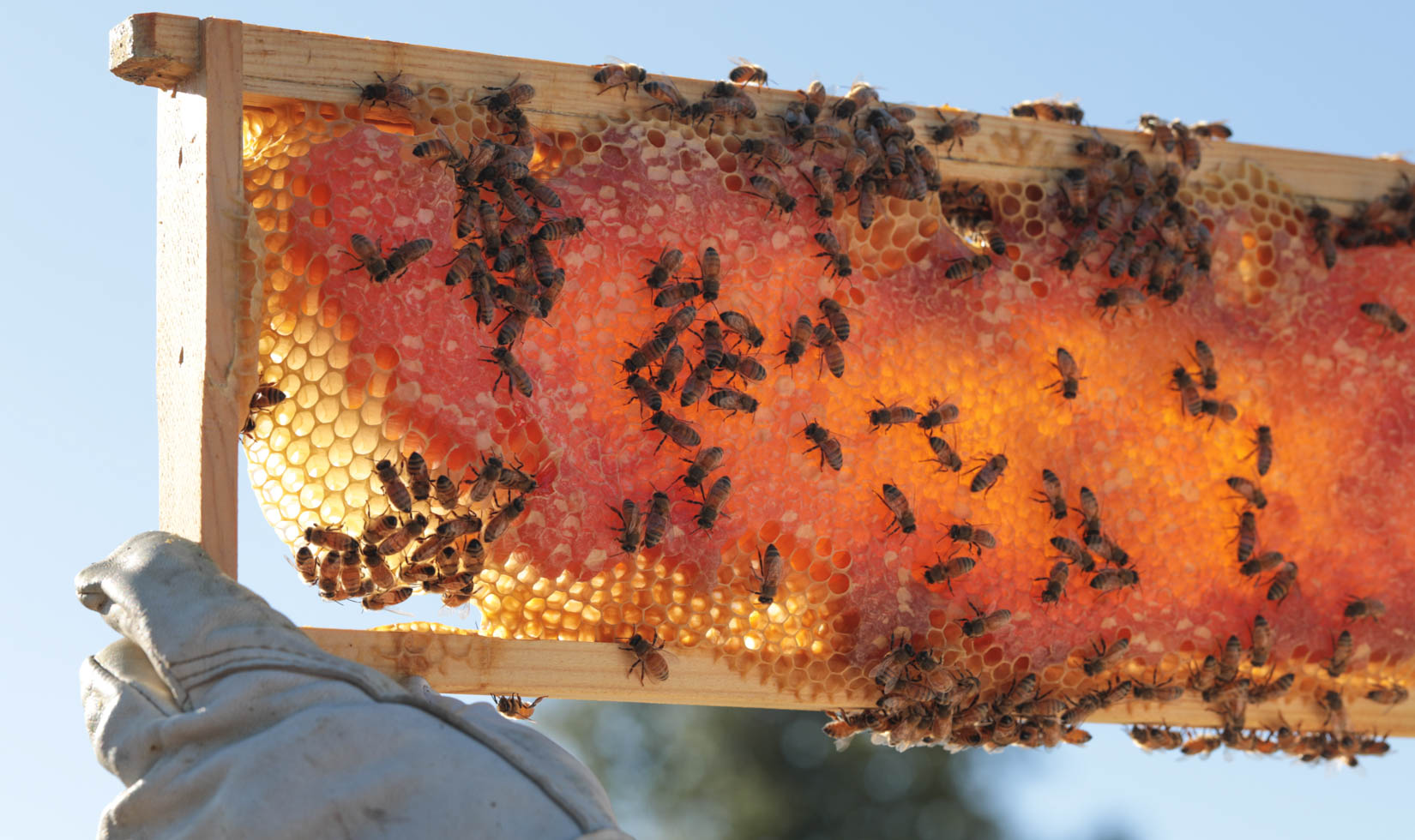
1. Dancing is a form of bee communication.
Forager bees scout out food and let their hive know when they’ve found nectar, a.k.a. lunch. To communicate their delicious find, they dance. Dancing in round circles tells other honey bees that there is a motherlode of pollen nearby. The waggle dance is a little more complex. “Waggling” bees dance in the shape of the number eight. The waggle dance communicates distance to the food source. According to PBS.org, for every 75 milliseconds the worker bee waggles, she is telling the others that the pollen is about 330 feet away. Another interesting honey bee fact: Worker bees will do a shake dance to let their hive know that the nectar source is so rich and bountiful that they need more bees to get to work.
2. Worker bees are females that have different jobs throughout their lives.
Now you know why we referred to worker bee as a she. Infertile thanks to the dominating queen’s pheromones, workers perform about a dozen different chores that keep the colony thriving. In short, worker bees do everything that drones and the queen don’t. Examples include nursing (feeding baby bee larvae), tending to the queen (feeding, grooming, cleaning up after her—typical royal servant work), organizing and processing nectar, cleaning the hive, ventilating the hive remove carbon dioxide, building beeswax, guarding against invaders and scouting for food. The oldest, wisest bees earn the scouting job. In her tiny lifespan of just 5-6 weeks, a worker bee will hold many of these vital jobs. Throughout their lives, worker bees progress through these tasks, fulfilling essential roles in the colony’s survival and prosperity. As English poet William Blake once said,” The busy bee has no time for sorrow.” For an insect with a brain the size of a sesame seed, isn’t it fascinating how many jobs they perform during their lifetime?
3. Drone bees are male and have only one job: to mate with the queen.
Unlike worker bees, drones do not have stingers and cannot collect nectar or pollen. After mating, the drone’s genitals are ripped off, and he dies shortly thereafter. As writer and philosopher Matshona Dhliwayo said: “Honeybees are a reminder that life is rich with sweetness despite the sting.” Drones that don’t mate are usually expelled from the hive before winter, as they consume resources without contributing to the colony’s survival. There is only one male drone for every 100 female worker bees in a hive. If there were such a thing as an insect soap opera, we have a feeling the drone would be the star—and there would be lots of sequels.
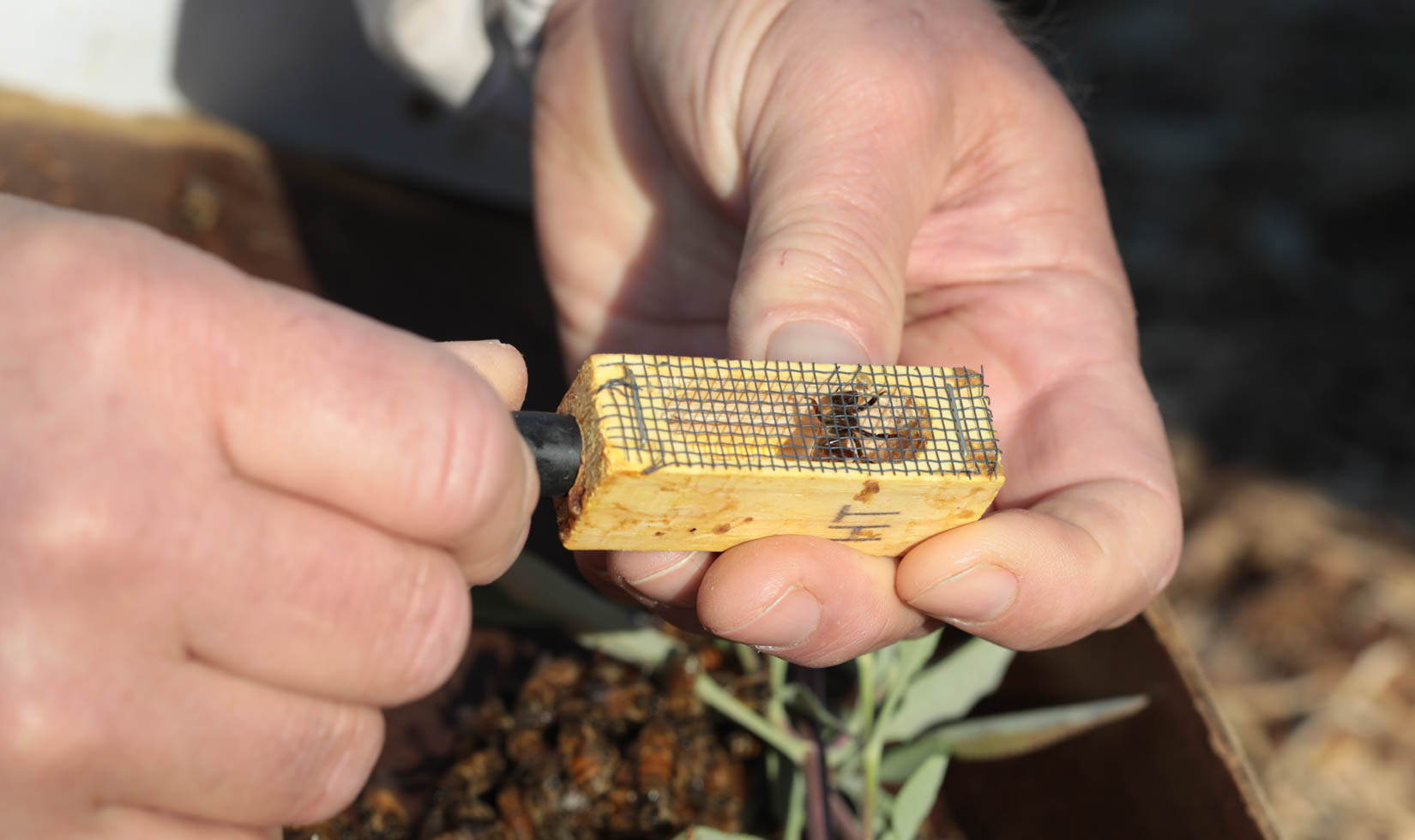
4. Queen bees have only one responsibility: to lay eggs.
The queen bee plays a crucial role in the honeybee colony as the primary reproductive individual. She lays down the law—and the eggs. According to The Biology of the Honey Bee by Mark L. Winston, the queen pheromones do more than regulate reproductive development of the other bees. They also influence hierarchical behavior, which maintains social cohesion and harmony within the hive. Her presence and reproductive abilities are essential for the colony’s survival and overall functioning.
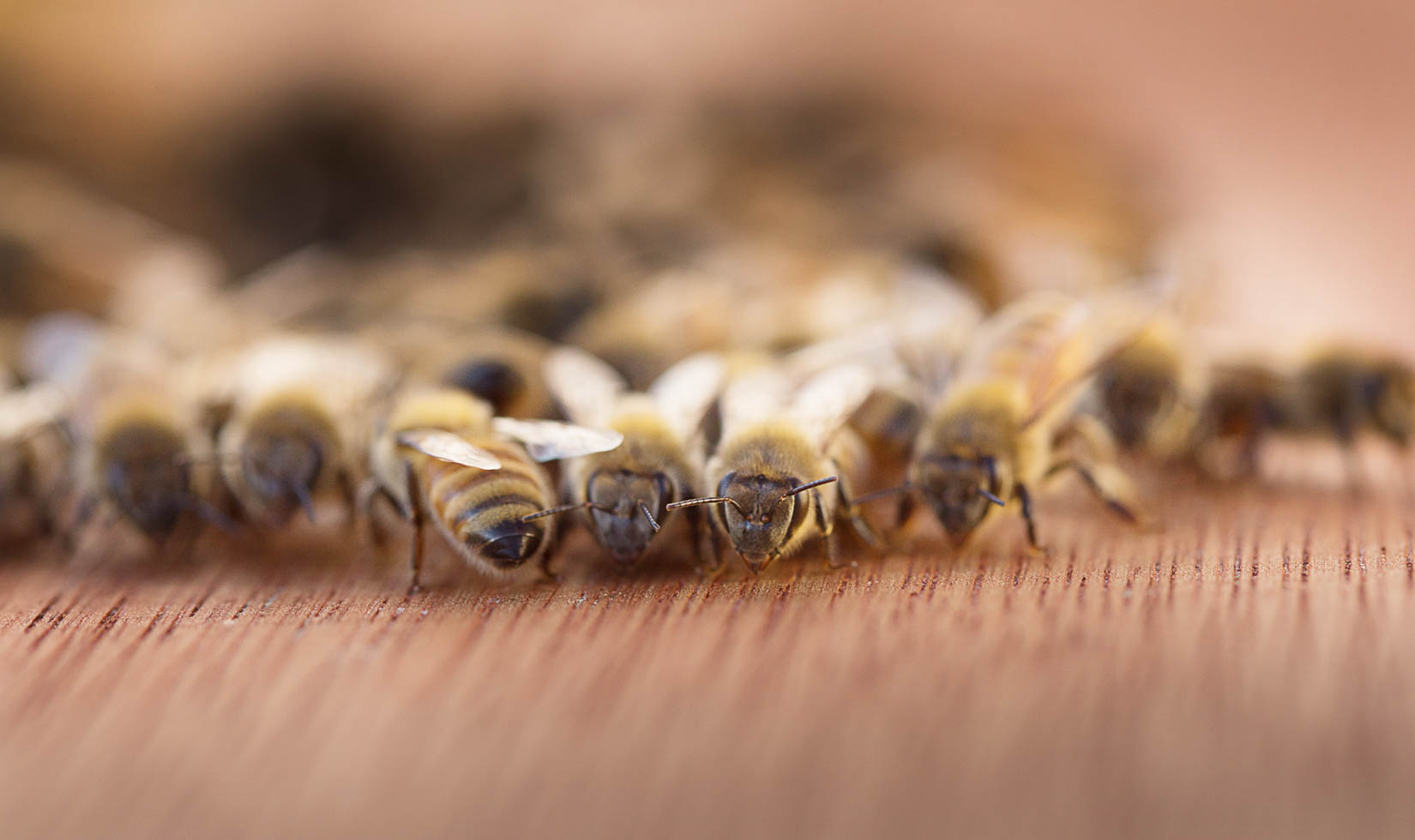
5. Super interesting honey bee fact: Bees have five eyes.
Honey bee eyes include two large compound eyes and three smaller ocelli, the latter of which are organized in a triangular pattern. The compound eyes are situated on the sides of their head and are responsible for detecting motion, shapes and colors. The three ocelli, located on top of their heads, help them gauge light intensity and navigate in flight. These multifaceted eyes collectively give honey bees exceptional vision, enabling them to efficiently forage for nectar, pollen, and navigate through their surroundings with remarkable precision.
6. Where and when bees sleep is determined by their age and their jobs.
Bees have a unique sleeping pattern, characterized by short bouts of rest rather than long, continuous sleep. They take frequent micro-naps throughout the day and night, totaling around 5-8 hours of sleep in a 24-hour period. They are the ultimate power nappers. During these quick breaks, worker bees can be found resting inside the hive, clinging to the honeycomb or other bees. They often sleep in groups, creating a cozy communal atmosphere for their well-deserved catnaps.
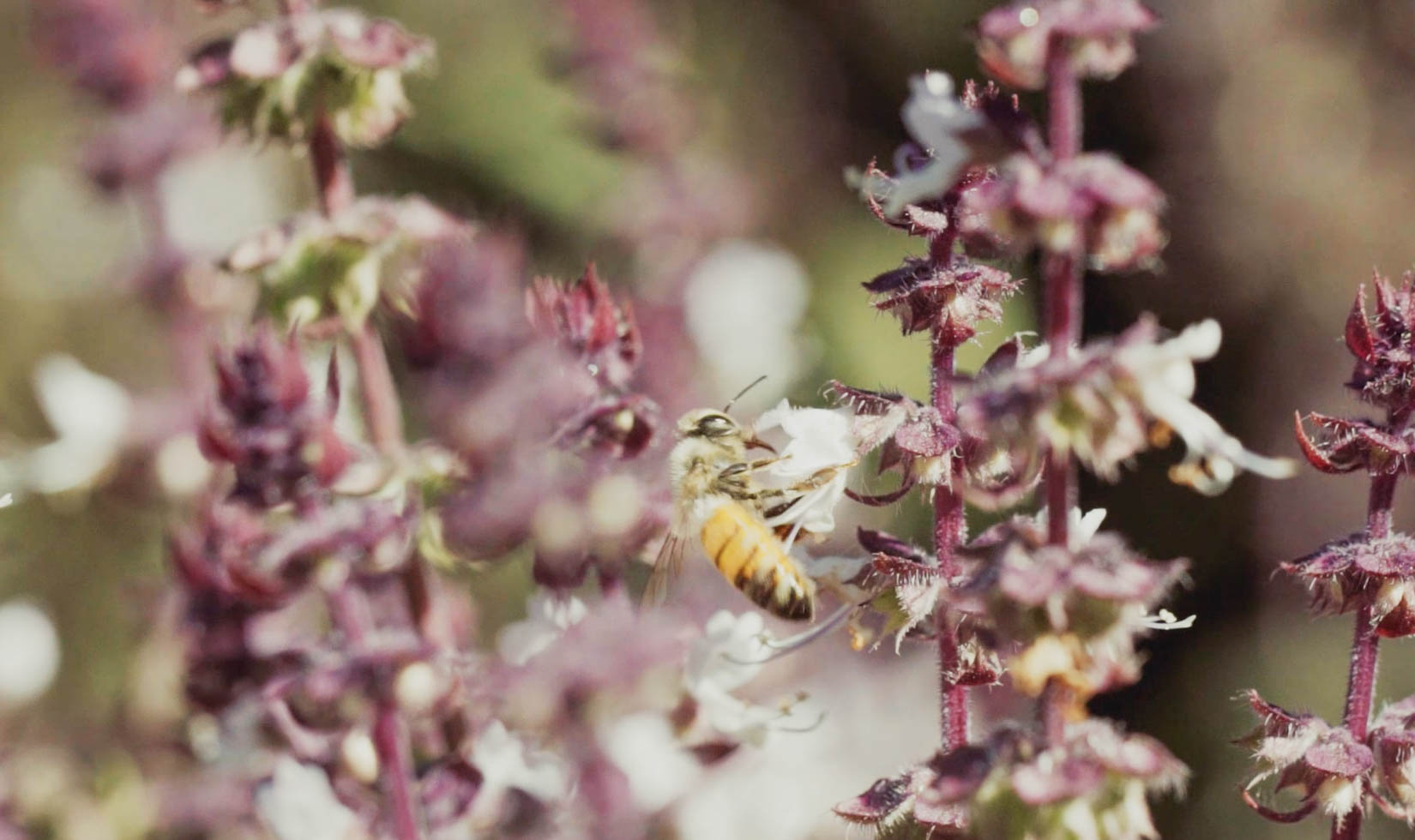
7. Bees are cold-blooded insects; they vibrate their wings to stay warm.
Bees vibrate to stay warm through a behavior called “thermoregulation.” When the temperature drops, worker bees gather together and create a cluster, tightly packed with their bodies touching. Then, they rapidly contract and relax their beating wings, generating heat through friction. This vibrating movement raises the temperature within the cluster, helping them maintain the critical warmth needed for their survival during cold weather.
8. Baby queen bees dine exclusively on royal jelly.
Royal jelly is a highly nutritious, milky-white substance produced by young worker bees to feed baby queens during their larvae stage in life. This unique diet triggers significant physiological changes for the aspiring queen, promoting rapid growth and development, and ultimately determines her destiny as future queen. The rich composition of royal jelly, including proteins, vitamins, and hormones, fuels the queen’s superior size, fertility, and longevity, making her the central figure in the hive’s reproduction and survival. Royal jelly is like mother’s milk, minus the mom.
9. Western honey bees were introduced to the New World by Europeans.
The western or European honey bee (Apis mellifera) was brought to North America by European settlers in the 17th century for honey and wax production. As the Europeans colonized the Americas, they carried beehives with them, leading to the establishment of feral populations.
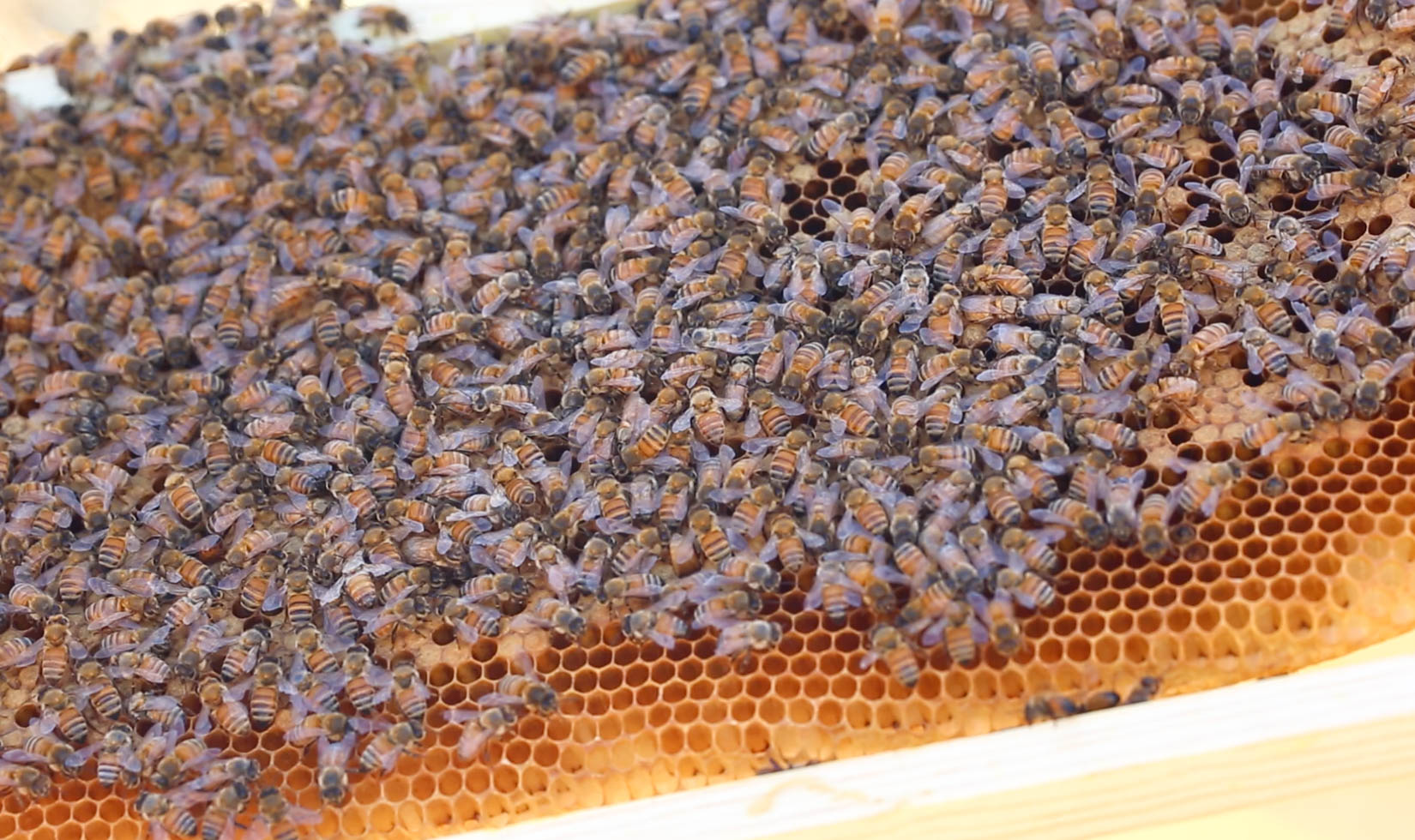
10. The European honey bee is not native to Europe.
Contrary to its geographic name, the European honey bee is not a native of Europe. For decades, scientists have debated the origin of Apis mellifera, the European/western honey bee—the Middle East, Asia and Africa have all been referenced. A 2021 report by York University determined that the common western honey bee likely got its global start in Asia
11. Western bees are domesticated, though Italian bees are the most docile; African bees are the most aggressive.
The world’s most popular honey bee species, Apis mellifera are generally less aggressive compared to some other bee species because they have evolved in close association with humans and are more tolerant of disturbances and handling. Italian bees are reportedly the most laid back of all honey bees—la dolce vita, perhaps? African honey bees, descendants of the Apis mellifera scutellate earned the nickname killer bees due to their aggressive behavior. These bees evolved in tropical regions with limited resources, leading to a more defensive nature to protect their hives from predators and competitors. This increased aggressiveness is a survival strategy developed over time in their native habitats; they were accidentally introduced to the Americas in the mid-20th century. Africanized and African honey bees are terms used almost interchangeably; sometimes Africanized honey bees refer to African bees crossbred with European honeybees in Brazil in the 1950s to bolster honey production.
12. Bees convert the sugar in honey into wax.
Honey bees convert sugar in honey to wax through a fascinating process. When honey bees consume the honey they’ve collected from flowers, it goes through their digestive system where enzymes break down the sugars. The bees then excrete the processed honey as wax scales from their abdominal glands. Worker bees use these wax scales to construct the intricate honeycomb structure, creating the hexagonal cells that store honey, pollen, and serve as a nursery for the brood. So, in essence, honey bees transform the energy-rich sugars in honey into wax, utilizing it as a building material for their hive.
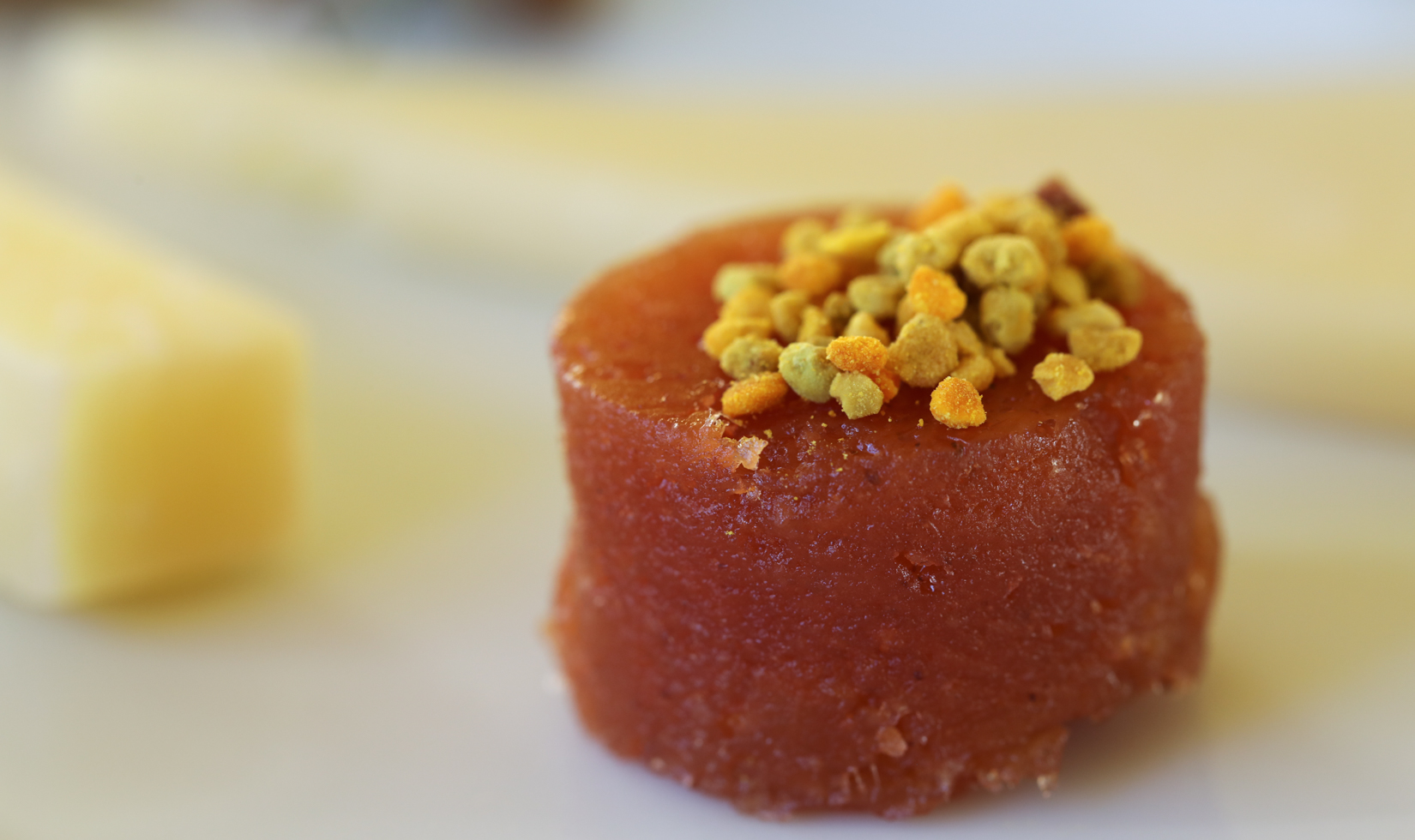
13. Pollen is the bees’ protein source.
Pollen is a rich source of protein for bees. Bees collect pollen from flowers using specialized hairs on their bodies and legs, and then they transport it back to the hive in pollen baskets on their hind legs. Once inside the hive, worker bees mix the collected pollen with nectar and enzymes, creating “bee bread,” the primary protein source for the colony. This protein is essential for the development and growth of young bees, particularly the brood (eggs, larvae, and pupae). It also supports the overall health and strength of the adult bees, enabling them to perform their various tasks, such as foraging, nursing and defending the hive.
14. Bees make their own bee bread by fermenting pollen.
Although bee bread lacks the high carbohydrates found in our daily bread, the two doughs do have one thing in common: fermentation. The moist mixture of pollen, nectar and salivary enzymes is stored in the honeycomb cells, where it undergoes fermentation due to lactic acid bacteria, found in the gastrointestinal tract of honey bees. This fermentation process breaks down the complex proteins and starches in the pollen, making it more digestible and nutrient-rich for the developing brood and the entire bee colony. A fun honey bee fact for foodies.
15. Bees harvest resins and saps (known as propolis) to waterproof their hives.
Another honey bee fact that amazed us: They are excellent builders and make their own glue. Honey bees collect resins from tree buds or bark by using their mandibles to scrape them off, and then they transport these resins back to the hive in specialized pollen baskets on their hind legs. Inside the hive, worker bees mix these resins with wax, pollen, and enzymes to create propolis, also known as “bee glue.” They use this sticky substance to seal cracks and small openings in the hive, acting as a natural waterproof and airtight sealant. Propolis also possesses antimicrobial properties, making it an essential tool for hive hygiene. If you google “bee glue” or propolis, you’ll find many links to studies showing its potential in combating infections, protecting against oxidative damage, and alleviating inflammatory conditions, making it a fascinating subject of research in the field of natural medicine and healthcare.
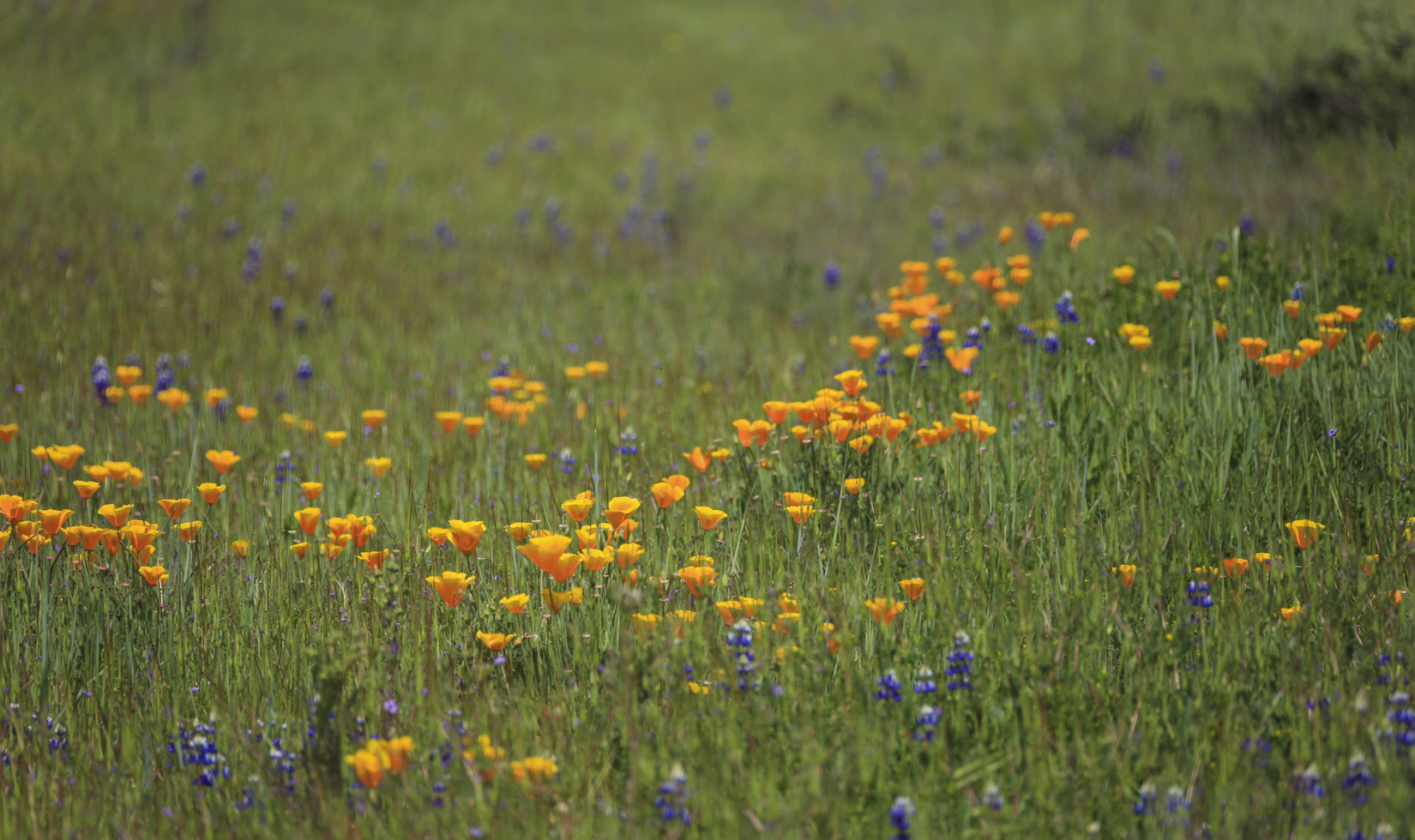
16. It takes the nectar from two million flowers to make one pound of honey.
This is one of the reasons why Jordan seeds flowers in the winery garden every year. The world needs more flowers, and as the slogan says, “Bees are not optional.”
17. Honey bees add an enzyme to honey that turns into hydrogen peroxide, making the honey antibacterial.
Hydrogen peroxide is a potent antimicrobial agent that further enhances honey’s ability to combat bacteria, fungi, and other pathogens, making it a valuable traditional remedy for wound healing and overall health.
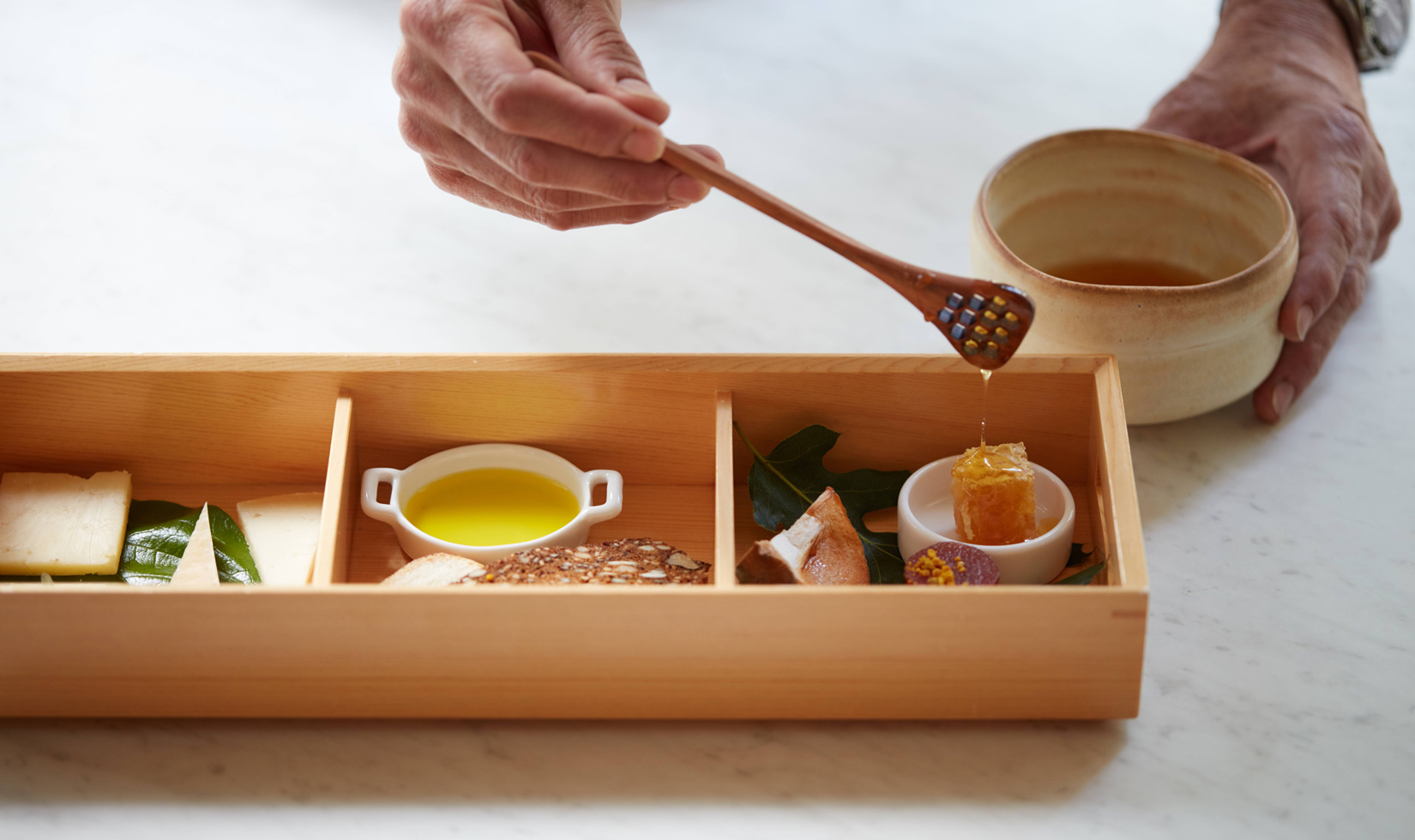
18. Honey can help heal wounds and burns through a combination of the drying effect of the simple sugars and honey’s antibacterial nature.
The historical use of honey for healing wounds and burns dates back thousands of years. Honey was applied topically to wounds and burns to prevent infection, reduce inflammation, and promote tissue regeneration. New research is continuously emerging in this field.
19. Honey contains flavonoids, antioxidants that may reduce the risk of some certain cancers and heart disease.
Evidence-Based Complementary and Alternative Medicine (eCam), a peer-reviewed journal, has published multiple studies on this topic. Its 2019 study explored the anticancer potential of flavonoids derived from different types of honey. The research indicated that honey flavonoids had cytotoxic effects on cancer cells, causing cell death and inhibiting tumor growth.
20. Ancient Olympic athletes ate honey to enhance their performance.
While there is no direct evidence that ancient Olympic athletes specifically ate honey to enhance their performance, honey was indeed a common dietary component for ancient athletes and warriors in various cultures. Ancient Greeks, who founded the Olympic Games, valued honey for its energy-boosting properties.
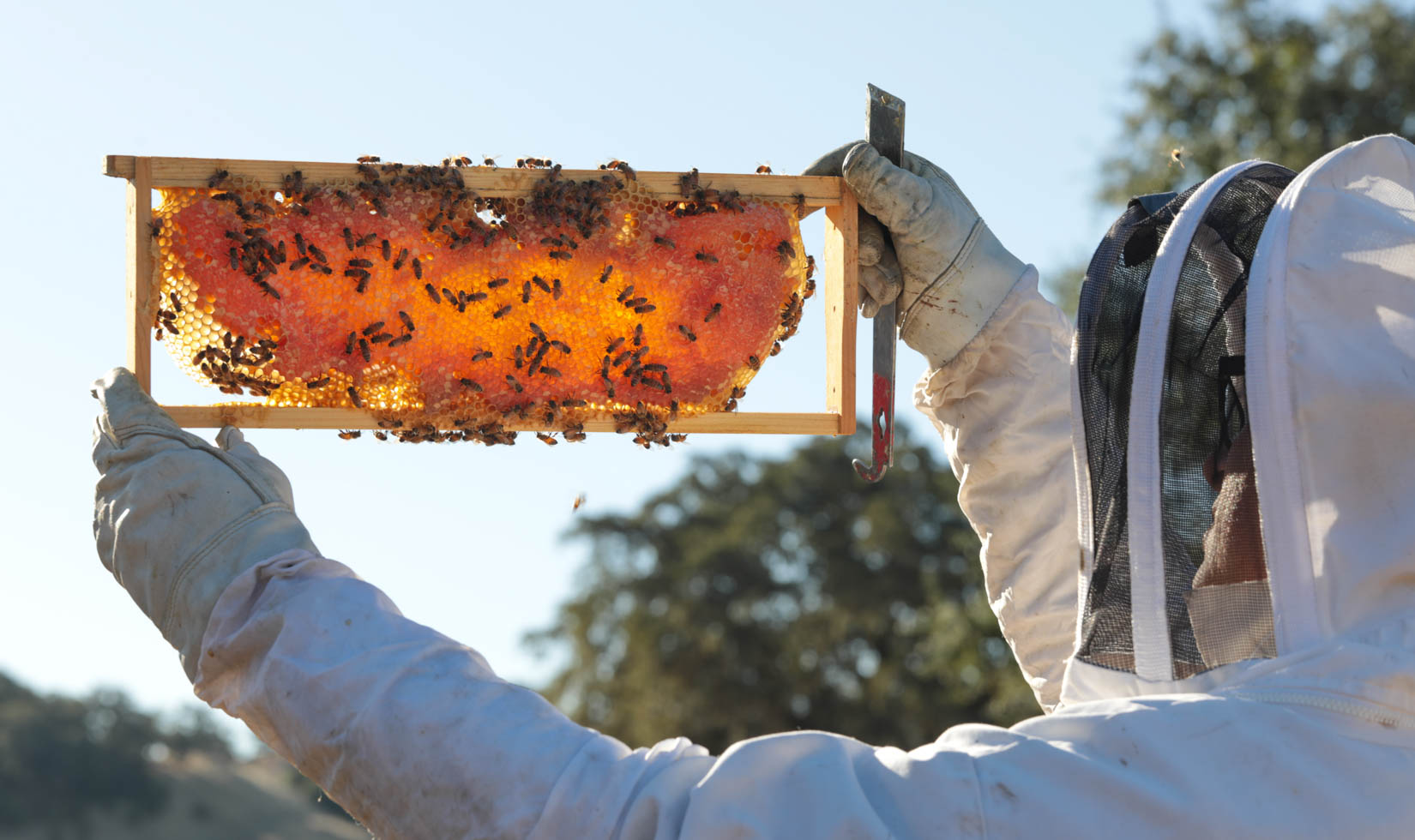
21. Honey’s exact combination of fructose and glucose helps the body regulate blood sugar levels.
Honey has a low glycemic index (GI). The presence of fructose slows down the absorption of glucose in the bloodstream, preventing rapid spikes in blood sugar. A study published in the International Journal of Food Sciences and Nutrition found that honey’s lower GI compared to sucrose and other sweeteners contributes to better glycemic control, making it a favorable option for individuals concerned about blood sugar management. No wonder it’s the preferred sweetener of many chefs.
22. Honey is the third most faked food in the world, according to Larry Olmsted, author of Real Food, Fake Food. Only olive oil and cheese are faked more often than honey.
It’s important to know and trust your honey sources. Buy local whenever possible. Honey is often faked or adulterated almost as much as olive oil and cheese due to its high demand and potential for economic gain. The process of faking honey involves diluting it with cheaper sweeteners, such as high-fructose corn syrup or sugar syrup, to increase the volume and lower production costs. Additionally, the global honey market lacks strict regulations and effective monitoring, making it easier for unscrupulous producers to pass off counterfeit honey as genuine, leading to concerns over the authenticity and quality of the product.
23. China was banned from importing honey into Europe in 2010 by the 27 countries of the European Union.
“Honey laundering”—the smuggling of adulterated Chinese honey, which is a mixture of real honey with syrup and other foreign honey labeled as pure honey, into the US—is widespread. This fraud has been called “Honeygate.”
24. China is the world’s largest producer of honey and exports large amounts to the rest of the world.
According to the Food and Agriculture Organization (FAO) of the United Nations, China produced approximately 444,000 metric tons of honey in 2020, making it the leading honey-producing country in the world. The number increased to 472,000 in 2021—almost five times more than Turkey, the world’s second largest producer. Several factors contribute to China’s prominence in honey production, including its vast agricultural landscapes, a wide variety of honey-producing plant species, large numbers of beekeepers, and a long history of beekeeping traditions. Additionally, the country’s ability to export honey at competitive prices further solidifies its position as the world’s primary honey producer.
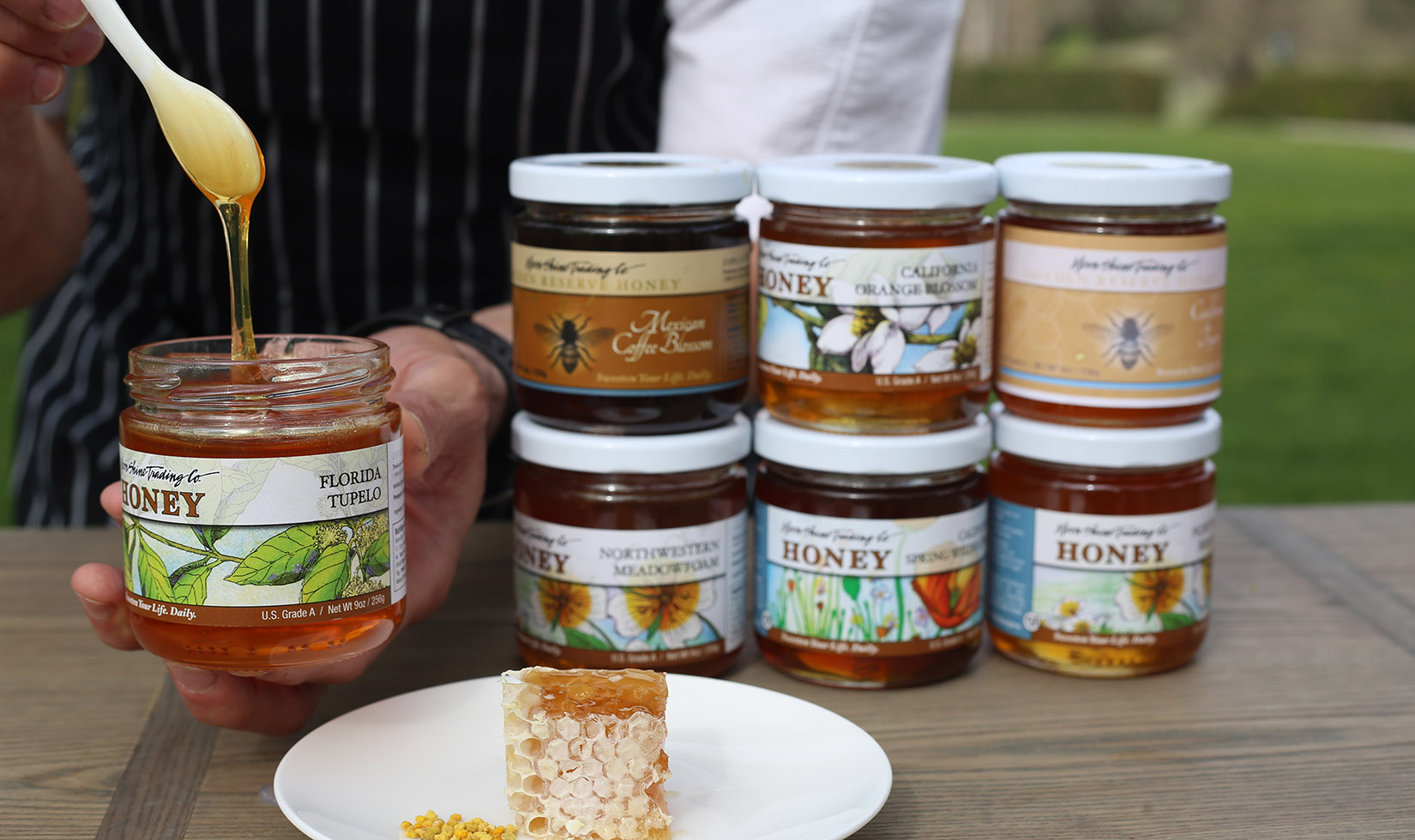
25. You can tell the difference between real honey and fake honey by checking stickiness, thickness, taste and smell with this easy test.
One final honey bee fact: The Jordan Estate apiary features seven beehives and a carefully designed bee flower garden. Reserve the Estate Tour & Tasting during summer and fall or book a Nature Hike during spring to see the Jordan apiary and taste Jordan Estate Honey. If you’re feeling inspired at home, plant a bee garden like we did.
